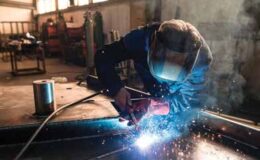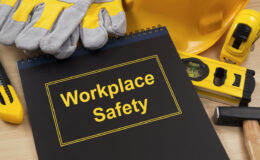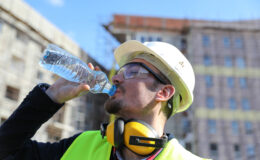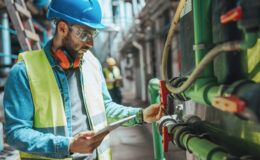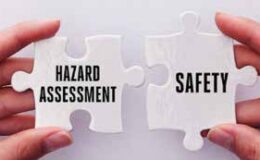By Travis Halsted, Loss Control Consultant
As the desire to minimize business costs grow, the availability to have employees designated to maintain housekeeping and cleanliness has diminished. Sadly, slip, trip, and fall hazards have provided a staggering number of 25,000 incidents daily. Since 2009, MTMIC has spent approximately $11.5 million on injuries resulting from a slip, trip, fall, and/or debris on the walking surface. General housekeeping and cleanliness plays a vital role in reducing the possibility of these types of injuries.
 Injuries that can be attributed to slips, trips and falls can include lacerations, contusions, punctures, fractures, and strains. Strains from slips, trips, and falls accounted for $4.1 million of the $11.5 million spent on these types of injuries.
Injuries that can be attributed to slips, trips and falls can include lacerations, contusions, punctures, fractures, and strains. Strains from slips, trips, and falls accounted for $4.1 million of the $11.5 million spent on these types of injuries.
Some important aspects to remember when analyzing your workplace for any slip, trip and fall hazards is to:
- Keep electrical cords and air hoses out of traffic areas.
- Remove clutter (boxes, excessive raw material, trash, chemical containers) from traffic areas.
 Immediately clean up any spills
Immediately clean up any spills- Place a wet floor sign when area is cleaned using a mop.
- Make sure that traffic areas are properly lit as a person will trip over what they can’t see.
- Regularly inspect traffic areas for damages and hazards (chipped floor coverings, cracked and/or missing concrete, and uneven levels of walking surfaces.)
- Complete an audit of spill response and spill response measures.
- Complete walk-throughs of the work area focusing on general cleanliness.
- Mark any changes in walking surface elevations by either using a highly visible paint or tape that shows a hazard.
 Areas that have been found to be more prone to slip, trip and fall accidents include doorways, ramps, uneven surfaces and heavy traffic areas. Hallways have also been found to become a hazardous area as they quickly become cluttered with boxes and other items that need to be stored thus blocking proper walkways. One of the most prominent forms of slip hazards is wet and dry contaminations on the walking surface. Wet sources include water, oils, grease, coolant, and even soap. Dry contamination includes dusts, granules, and powders. By maintaining proper cleaning measures and training of employees, these spills and general operation debris should be cleaned up to avoid a possible injury.
Areas that have been found to be more prone to slip, trip and fall accidents include doorways, ramps, uneven surfaces and heavy traffic areas. Hallways have also been found to become a hazardous area as they quickly become cluttered with boxes and other items that need to be stored thus blocking proper walkways. One of the most prominent forms of slip hazards is wet and dry contaminations on the walking surface. Wet sources include water, oils, grease, coolant, and even soap. Dry contamination includes dusts, granules, and powders. By maintaining proper cleaning measures and training of employees, these spills and general operation debris should be cleaned up to avoid a possible injury.  While keeping the area clean, dry, and maintained properly is important, it is also vital to ensure that the proper footwear is being worn. Slip and oil resistant soles on footwear can prevent losing traction in a wet and slippery environment. Furthermore, in facilities where office personnel may enter the production area it is equally important that dress shoes, high heels and sandals should not be allowed, as they do not provide the slip resistance that a work shoe provides.
While keeping the area clean, dry, and maintained properly is important, it is also vital to ensure that the proper footwear is being worn. Slip and oil resistant soles on footwear can prevent losing traction in a wet and slippery environment. Furthermore, in facilities where office personnel may enter the production area it is equally important that dress shoes, high heels and sandals should not be allowed, as they do not provide the slip resistance that a work shoe provides.
As employees are often the ones being injured it is possibly the most important aspect to include them in the process. In a great deal of production facilities the employees will clean and mop their own particular area, walkways, and aisles. During this cleaning and mopping process they often use to much cleaning solution in the mop water thus making the walking surface more of a hazard than not mopping at all. Ensure that they are trained on how to mix the proper cleaning mixture. Train them on what the hazards are and how to avoid them. Train them to report hazards when they see them and to not be afraid to remedy a problem. Through proper training, employee involvement, and management commitment a proactive housekeeping plan can be put in place.

